Name Mirza Nuri Successor `Abdu\'l-Baha Siblings Subh-i-Azal, Mirza Musa | Role Religion founder | |
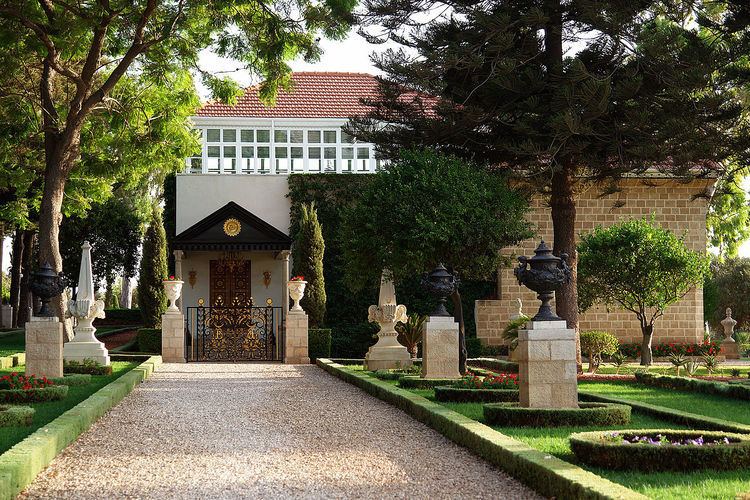 | ||
Full Name Mirza Husayn-`Ali Nuri Born 12 November 1817 ( 1817-11-12 ) Tehran, Persia (present-day Iran) Known for Founder of the Baha\'i Faith Died May 29, 1892, Acre, Israel Children `Abdu\'l-Baha, Mirza Muhammad `Ali, Bahiyyih Khanum Parents Khadijih Khanum, Mirza `Abbas Nuri Books Kitab‑i‑Aqdas, Gleanings from the Writings o, Hidden Words, Kitab‑i‑Iqan, Epistle to the Son of the Wolf Similar People `Abdu\'l‑Baha, Shoghi Effendi, Subh‑i‑Azal, Bahiyyih Khanum, Mirza Mihdi | ||
Baha u llah a glimpse of his life and teachings
Bahá'u'lláh (/bəˈhɑːʊˌlɑː/; Arabic: بهاء الله, "Glory of God"; 12 November 1817 – 29 May 1892), born Mírzá Ḥusayn-`Alí Núrí (Persian: میرزا حسینعلی نوری), was the founder of the Bahá'í Faith. He claimed to be the prophetic fulfilment of Bábism, a 19th-century outgrowth of Shaykhism, and, in a broader sense to be a Manifestation of God. He also claimed he was the fulfillment of the eschatological expectations of Islam, Christianity, and other major religions.
Contents
- Baha u llah a glimpse of his life and teachings
- Baha u llah the secret of our century
- Early and family life
- Bb movement
- Acceptance of the Bb
- Syh Chl
- Baghdad
- Kurdistan
- Return to Baghdad
- Declaration in the Garden of Ridvan
- Imprisonment
- Constantinople
- Adrianople
- Writings and letters to the leaders of the world
- Acre
- Final years
- Claims
- Succession
- Works
- Photographs and imagery
- References
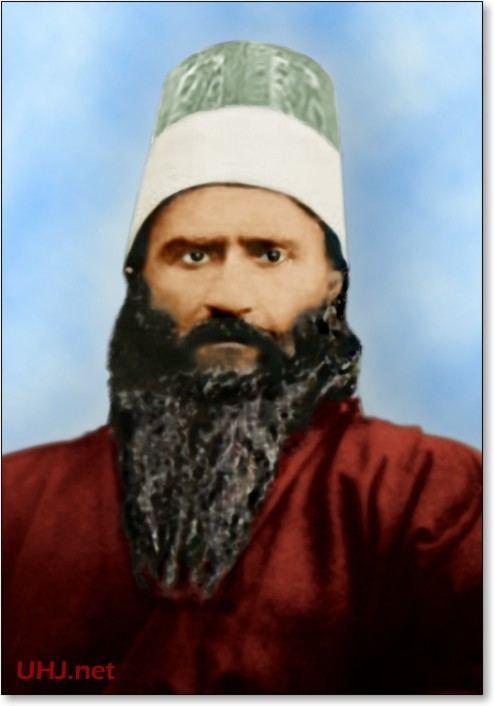
Bahá'u'lláh taught that humanity is one single race and that the age has come for its unification in a global society. He taught that "there is only one God, that all of the world’s religions are from God, and that now is the time for humanity to recognize its oneness and unite." Initially imprisoned and banished as a follower of the Báb, his claim to divine revelation led to further persecution and imprisonment by the Persian and Ottoman authorities, and his eventual 24-year confinement in the prison city of Acre, Palestine (present-day Israel), where he died. He wrote many religious works, most notably the Kitáb-i-Aqdas, the Kitáb-i-Íqán and Hidden Words.

There are two known photographs of Bahá'u'lláh. Outside of pilgrimage, Bahá'ís prefer not to view his photo in public, or even to display it in their private homes.
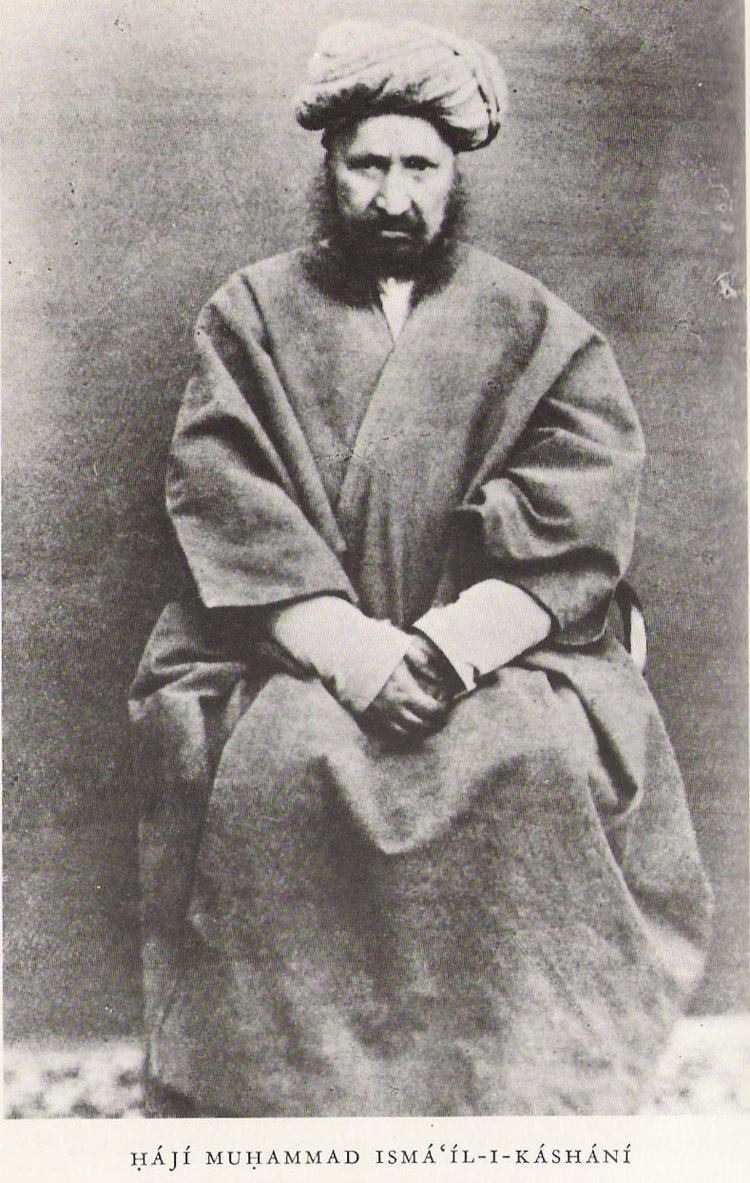
Baha u llah the secret of our century
Early and family life
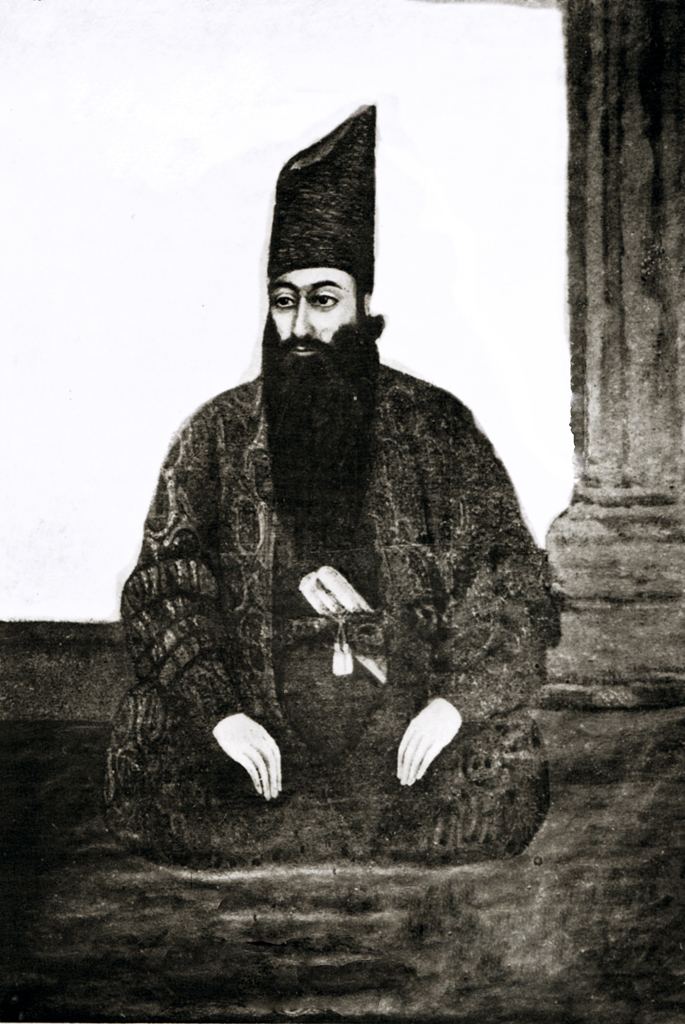
Bahá'u'lláh was born on 12 November 1817, in Tehran, the capital of Persia, present-day Iran. Bahá'í authors state that his ancestry can be traced back to Abraham through Abraham's wife Keturah, to Zoroaster and to Yazdgerd III, the last king of the Sassanid Empire, and also to Jesse. According to the Bahá'í author John Able, Bahá'ís also consider Bahá'u'lláh to have been "descended doubly, from both Abraham and Sarah, and separately from Abraham and Keturah." His mother was Khadíjih Khánum and his father was Mírzá Buzurg. Bahá'u'lláh's father, Mírzá Buzurg, served as vizier to Imám-Virdi Mírzá, the twelfth son of Fat′h Ali Shah Qajar. Mírzá Buzurg was later appointed governor of Burujird and Lorestan, a position that he was stripped of during a government purge when Muhammad Shah came to power. After the death of his father, Bahá'u'lláh was asked to take a government post by the new vizier Hajji Mirza Aqasi, but declined.
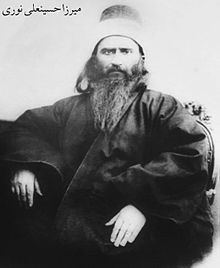
Bahá'u'lláh had three wives. He married his first wife Ásíyih Khánum, the daughter of a nobleman, in Tehran in 1835, when he was 18 and she was 15. She was given the title of The Most Exalted Leaf and Navváb. His second wife was his widowed cousin Fátimih Khánum. The marriage took place in Tehran in 1849 when she was 21 and he was 32. She was known as Mahd-i-`Ulyá. His third wife was Gawhar Khánum and the marriage occurred in Baghdad sometime before 1863.
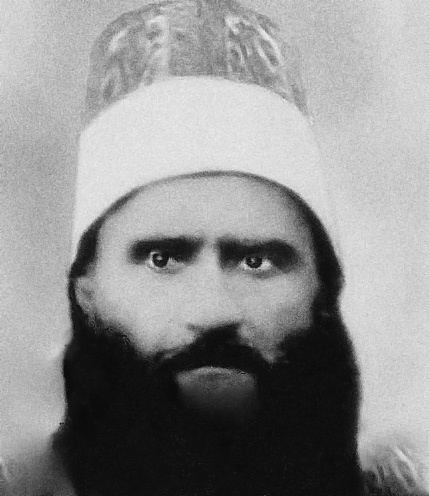
Bahá'u'lláh declared Ásíyih Khánum his "perpetual consort in all the worlds of God", and her son `Abdu'l-Bahá as his vicar. He had 14 children, four daughters and ten sons, five of whom he outlived. Bahá'ís regard Ásíyih Khánum and her children Mírzá Mihdí, Bahíyyih Khánum and `Abdu'l-Bahá' to be the Bahá'í holy family.
Bábí movement
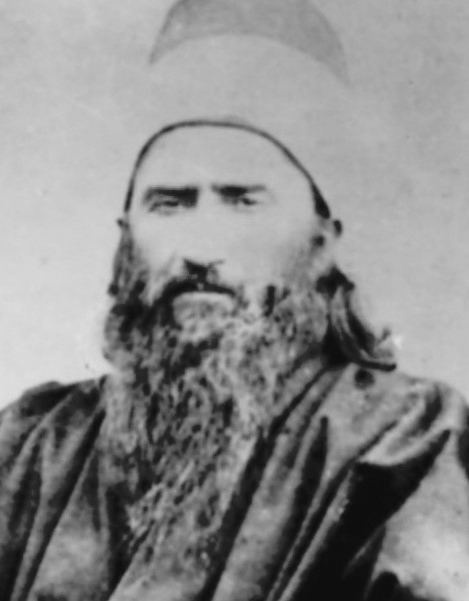
In 1844, a 25-year-old man from Shiraz, Siyyid Mírzá `Alí-Muḥammad claimed to be the promised redeemer (or Mahdi) of Islam, taking the title of the Báb, or the "Gate". The resulting Bábí movement quickly spread across the Persian Empire and received widespread opposition from the Islamic clergy. The Báb himself was executed in 1850 by a firing squad in the public square of Tabriz at the age of 30 and the community was almost entirely exterminated in 1852–3.
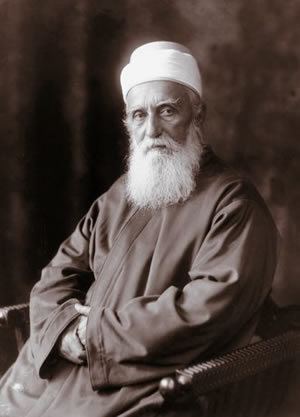
While the Báb claimed a station of revelation, he also claimed no finality for his revelation. In most of his prominent writings, the Báb alluded to a Promised One, most commonly referred to as "Him whom God shall make manifest". According to the Báb, this personage, promised in the sacred writings of previous religions, would establish the kingdom of God on the Earth; several of the Báb's writings state the coming of Him whom God shall make manifest would be imminent. In the books written by the Báb he constantly entreats his believers to follow Him whom God shall make manifest when he arrives. The Báb also eliminated the institution of successorship or vicegerency to his movement, and stated that no other person's writings would be binding after his death until Him whom God shall make manifest would appear.
Acceptance of the Báb

Bahá'u'lláh first heard of the Báb when he was 27, and received a visitor sent by the Báb, Mullá Husayn, telling him of the Báb and his claims. Bahá'u'lláh accepted the Báb's claims, becoming a Bábí and helping to spread the new movement, especially in his native province of Núr, where he became recognized as one of its most influential believers. His notability as a local gave him many openings, and his trips to teach the religion were met with success, even among some of the religious class. He also helped to protect fellow believers, such as Táhirih, for which he was temporarily imprisoned in Tehran and punished with bastinado or foot whipping. Bahá'u'lláh, in the summer of 1848, also attended the conference of Badasht in the province of Khorasan, where 81 prominent Bábís met for 22 days; at that conference where there was a discussion between those Bábís who wanted to maintain Islamic law and those who believed that the Báb's message began a new dispensation, Bahá'u'lláh took the pro-change side, which eventually won out. It is at this conference that Bahá'u'lláh took on the name Bahá.
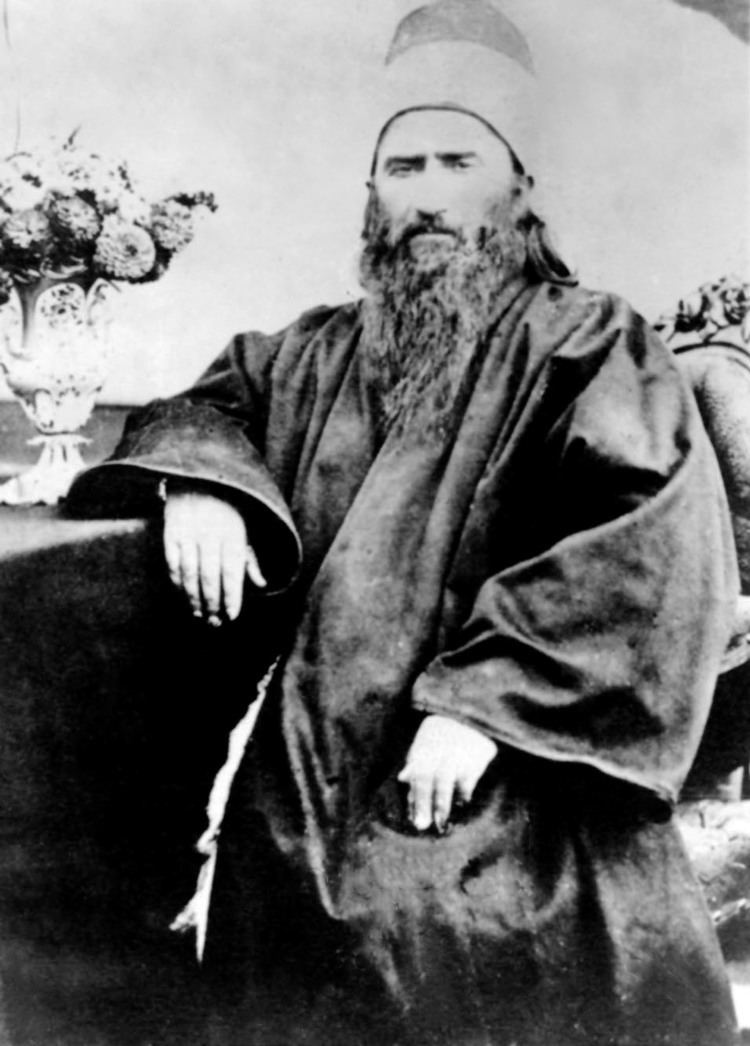
When violence started between the Bábís and the Qajar government in the later part of 1848, Bahá'u'lláh tried to reach the besieged Bábís at the Shaykh Tabarsi in Mazandaran, but was arrested and imprisoned before he could get there. The following years until 1850 saw the Bábís being massacred in various provinces after the Báb publicly made his claim of being the Manifestation of God.
Síyáh-Chál
After the Báb was executed in 1850, a group of Tehran Bábís, headed by a Bábí known as Azim, who was previously a Shaykhi cleric, plotted an assassination plan against the Shah Nasser-al-Din Shah, in retaliation for the Báb's execution. The policy was opposed by Bahá'u'lláh, who condemned the plan; however, any moderating influence that he may have had was diminished in June 1851 when he went into exile to Baghdad at the chief minister's request, returning only after Amir Kabir's fall from power. On 15 August 1852, the radical group of Bábís attempted to carry out the assassination of the Shah and failed. The group of Bábís linked with the plan, were rounded up and killed, and, notwithstanding the assassins' claim that they were working alone, the entire Bábí community was blamed, precipitating violent riots against the Bábí community, that were encouraged and orchestrated by the government. During this time many Bábís were killed, and many more who were not killed, including Bahá'u'lláh, were imprisoned in the Síyáh-Chál ("black pit"), an underground dungeon of Tehran.
According to Bahá'u'lláh, it was during his imprisonment in the Síyáh-Chál that he had several mystical experiences, and received a vision of a maiden from God, through whom he received his mission as a messenger of God and as the one whose coming the Báb had prophesied. The confession of the would-be assassin had exonerated the Bábí leaders, and in the context of the continuing mass executions of Babis, the ambassador of Russia requested that Bahá'u'lláh and other persons apparently unconnected with the conspiracy be spared. After he had been in the Síyáh-Chál for four months Bahá'u'lláh was in fact finally released, on condition he left Iran. Declining an offer of refugee status in Russia, he chose exile in Iraq (then part of the Ottoman Empire); in 1853 Bahá'u'lláh and his family, accompanied by a member of the Shah's bodyguard and a representative of the Russian embassy, travelled from Persia, arriving in Baghdad on 8 April 1853.
Baghdad
The Bab had appointed Mírzá Yahyá (later known as Subh-i-Azal) as the leader after himself. Mírzá Yahyá had gone into hiding after the assassination attempt on the Shah, and after Bahá'u'lláh's exile to Baghdad, he chose to join his brother there. At the same time, an increasing number of Bábís considered Baghdad the new center for leadership of the Bábí religion, and a flow of pilgrims started coming there from Persia.
Mírzá Yahyá's leadership was controversial. He generally absented himself from the Bábí community, spending his time in Baghdad in hiding and disguise; on several occasions he went so far as to publicly disavow allegiance to the Báb. Mírzá Yahyá gradually alienated himself from a large number of the Bábís, who started giving their alliance to other claimants. During the time that Mírzá Yahyá remained in hiding, Bahá'u'lláh performed much of the daily administration of Bábí affairs. In contrast to Mírzá Yahyá, Bahá'u'lláh was outgoing and accessible and he was seen by an increasing number of Bábís as a religious leader, rather than just an organizer, and became their center of devotion.
This was increasingly resented by Mírzá Yahyá, who began trying to discredit Bahá'u'lláh, thus driving many people away from the religion. Tensions in the community mounted, and in 1854 Bahá'u'lláh decided to leave the city to pursue a solitary life.
Kurdistan
On 10 April 1854, without telling anyone of his intention or destination, Bahá'u'lláh left his family to the care of his brother Mirza Musa and traveled with one companion to the mountains of Kurdistan, northeast of Baghdad, near the city of Sulaymaniyah. He later wrote that he left so as to avoid becoming a source of disagreement within the Bábí community, and that his "withdrawal contemplated no return".
For two years, Bahá'u'lláh lived alone in the mountains of Kurdistan. He originally lived as a hermit, dressed like a dervish and used the name Darvish Muhammad-i-Irani. At one point someone noticed his penmanship, which brought the curiosity of the instructors of the local Sufi orders. As he began to take guests, he became noted for his learning and wisdom. Shaykh `Uthmán, Shaykh `Abdu'r-Rahmán, and Shaykh Ismá'íl, leaders of the Naqshbandíyyih, Qádiríyyih, and Khálidíyyih Orders respectively, began to seek his advice. It was to the second of these that the Four Valleys was written. Bahá'u'lláh wrote several other notable books during this time.
In Baghdad, given the lack of firm and public leadership by Mirza Yahya, the Babi community had fallen into disarray. Some Babis, including Bahá'u'lláh's family, began searching for Bahá'u'lláh, and when news of a man living in the mountains under the name of Darvish Muhammad spread to neighboring areas, Bahá'u'lláh's family begged him to come back to Baghdad. On 19 March 1856, after two years in Kurdistan he returned to Baghdad.
Return to Baghdad
When Bahá'u'lláh returned to Baghdad he saw that the Bábí community had become disheartened and divided. During Bahá'u'lláh's absence, it had become alienated from the religion because Mirza Yahya had continued his policy of militancy and had been unable to provide effective leadership. Mirza Yahya had married the widow of the Báb against the Báb's clear instructions; dispatched followers to the province of Nur for the second attempt on the life of the Shah; and instigated violence against prominent Bábís who had challenged his leadership.
After his return to Baghdad, Bahá'u'lláh tried to revive the Bábí community, mostly through correspondence, writing extensively to give the Bábís a new understanding of the Bábí religion, while keeping his perceived station as the one promised by the Báb and a Manifestation of God hidden. He was soon recognized by the Bábís, as well as government authorities, as the foremost Bábí leader, and there was a growing number of people joining the Bábí movement. He also gained sympathy from government officials and Sunni clerics. Bahá'u'lláh's rising influence in the city, and the revival of the Persian Bábí community, gained the attention of his enemies in Islamic clergy and the Persian government. The Persian government asked the Ottoman government to extradite Bahá'u'lláh to Persia, but the Ottoman government refused and instead chose to move Bahá'u'lláh from the sensitive border region to Constantinople.
Declaration in the Garden of Ridvan
On 21 April 1863, Bahá'u'lláh left Baghdad and entered the Najibiyyih gardens, now the location of Baghdad Medical City and known to Bahá'ís as the Garden of Ridván. Bahá'u'lláh and those accompanying him stayed in the garden for twelve days before departing for Constantinople. It was during this time that Bahá'u'lláh declared to a small group of his companions his perceived mission and station as a Messenger of God. Bahá'ís regard this period with great significance and celebrate the twelve days that Bahá'u'lláh spent in this Garden as the festival of Ridván. He referred to the period of messianic secrecy between when he claimed to have seen the Maiden of Heaven in the Síyáh-Chál and his declaration as the ayyam-i butun ("Days of Concealment"). Bahá'u'lláh stated that this period was a "set time of concealment". The declaration in the Garden of Ridván was the beginning of a new phase in the Bábí community which led to the emergence of the Bahá'í Faith as a distinctive movement separate from Bábísm.
Imprisonment
Bahá'u'lláh was given an order to relocate to the Ottoman capital of Constantinople. Although not a formal prisoner yet, the forced exile from Baghdad was the beginning of a long process which would gradually move him into further exiles and eventually to the penal colony of Acre, Palestine (now in Israel).
Constantinople
Bahá'u'lláh travelled from Baghdad to Constantinople between 3 May and 17 August 1863, accompanied by a large group including family members and followers. During the trip, he was treated with respect in the towns he visited, and when he reached Constantinople, he was treated as a government guest. Why the Ottoman authorities did not permit his extradition to Persia, but instead invited him to come to Constantinople, is unclear. The reason may have been political because Bahá'u'lláh was viewed as a person of influence. However, Bahá'u'lláh refused to work with the Ottoman authorities. After three and a half months in Constantinople, he was ordered to depart for Adrianople. The reason for this further move is also unclear. It may have been due to pressure from the Persian ambassador, combined with Bahá'u'lláh's refusal to work with the Ottoman authorities.
Adrianople
From 1 to 12 December 1863, Bahá'u'lláh and his family traveled to Adrianople. Unlike his travel to Constantinople, this journey was in the nature of an exile. Bahá'u'lláh stayed in Adrianople for four and a half years, and was the clear leader of the newly established Bábí community there. Bahá'u'lláh's growing preeminence in the Bábí community and in the city at large led to a final breach between Bahá'u'lláh and Mirza Yahya. In 1865, Mirza Yahya was accused of plotting to kill Bahá'u'lláh. In contemporary accounts, Mirza Yahya is reported to have tried to have Bahá'u'lláh assassinated by a local barber. The barber, Muhammad `Alí of Isfahán, apparently refused and spread word of the danger around the community. Bahá'u'lláh is reported to have counseled "on all patience, quietude and gentleness". This pattern was repeated when, according to the personal account of Ustád Muhammad-`Alíy-i Salmání, Mirza Yahya attempted to persuade him likewise to murder Bahá'u'lláh in the bath. Eventually Mirza Yahya attempted to poison Bahá'u'lláh, an act that left him gravely ill for a time, and left him with a shaking hand for the rest of his life.
After this event in 1866, Bahá'u'lláh made his claim to be Him whom God shall make manifest public, as well as making a formal written announcement to Mirza Yahya referring to his followers for the first time as the "people of Bahá". After his public announcement, Bahá'u'lláh secluded himself in his house and instructed the Bábís to choose between himself and Mirza Yahya. Bahá'u'lláh's claims threatened Mirza Yahya's position as leader of the religion since it would mean little to be leader of the Bábís if Him whom God shall make manifest were to appear and start a new religion. Mirza Yahya responded by making his own claims, but his attempt to preserve the traditional Bábísm was largely unpopular, and his followers became the minority.
In 1867, Mirza Yahya challenged Bahá'u'lláh to a test of the divine will in a local mosque in Adrianople, such that "God would strike down the impostor." Bahá'u'lláh agreed, and went to the Sultan Selim mosque at the appointed time, but Mirza Yahya lost face and lost credibility when he refused to show up. Eventually Bahá'u'lláh was recognized by the vast majority of Bábís as "He whom God shall make manifest" and his followers began calling themselves Bahá'ís.
Writings and letters to the leaders of the world
During his time in Adrianople, Bahá'u'lláh wrote a great deal. One of the main themes during this time was the proclamation of his claimed mission; he instructed some of his followers to take his claims to Bábís in Iran and Iraq who had not heard of his statements, as well as asking the Bahá'ís to be united and detached from the world. He also started to write about distinctive Bahá'í beliefs and practices.
Also, while in Adrianople, Bahá'u'lláh proclaimed the Bahá'í Faith further by addressing tablets to the kings and rulers of the world asking them to accept his revelation, renounce their material possessions, work together to settle disputes, and endeavour toward the betterment of the world and its peoples. His first letter was sent to Sultan Abdülaziz of the Ottoman Empire and his ministers, which was followed by the Tablet of the Kings which was a general address to all rulers. In that latter letter the rulers of the earth were asked to listen to Bahá'u'lláh's call, and cast away their material possessions, and since they were given the reins of government that they should rule with justice and protect the rights of the downtrodden. He also told the rulers to reduce their armaments and reconcile their differences. The Christian monarchs were also asked to be faithful to Jesus' call to follow the promised "Spirit of Truth."
Later when Bahá'u'lláh was in Acre, he continued writing letters to the leaders of the world including:
Acre
With the Bábí community now irrevocably divided, the followers of Mirza Yahya tried to discredit Bahá'u'lláh to the Ottoman authorities, accusing him of causing agitation against the government. While an investigation cleared Bahá'u'lláh, it did bring to the attention of the government that Bahá'u'lláh and Mirza Yahya were propagating religious claims, and, fearing that this might cause future disorder, they decided to again exile the 'Bábí' leaders. A royal command was issued in July 1868 condemning the Bábís to perpetual imprisonment and isolation in far-flung outposts of the Ottoman Empire — Famagusta, Cyprus for Mirza Yahya and his followers, and Acre, in Ottoman Palestine, for Bahá'u'lláh and his followers.
The Bahá'ís, including Bahá'u'lláh and his family, left Adrianople on 12 August 1868, and, after a journey by land and sea through Gallipoli and Egypt, arrived in Acre on 31 August and were confined in the barracks in the citadel in the city. The inhabitants of Acre were told that the new prisoners were enemies of the state, of God and his religion, and that association with them was strictly forbidden. The first years in Acre imposed very harsh conditions with everyone becoming sick, and eventually three Bahá'ís dying. It was also a very trying time for Bahá'u'lláh: Mirzá Mihdí, Bahá'u'lláh's son, was suddenly killed at the age of twenty-two when he fell through a skylight while pacing back and forth in prayer and meditation. After some time, the people and officials began to trust and respect Bahá'u'lláh, and thus the conditions of the imprisonment were eased and eventually, after the Sultan's death, he was allowed to leave the city and visit nearby places. From 1877 until 1879 Bahá'u'lláh lived in the house of Mazra'ih. Dr. Thomas Chaplin, director of a British Hospital in Jerusalem visited Bahá'u'lláh in April 1871 and sent a letter to the editor printed in The Times in October. This seems to be the first extended commentary on Bahá'u'lláh in western newspapers.
Final years
The final years of Bahá'u'lláh's life (1879–1892) were spent in the Mansion of Bahjí, just outside Acre, even though he was still formally a prisoner of the Ottoman Empire. During his years in Acre and Bahjí, since `Abdu'l-Bahá, his eldest son, had taken care of the organizational work, Bahá'u'lláh was able to devote his time to writing, and he produced many volumes of work including the Kitáb-i-Aqdas, his book of laws. His other works included letters outlining his vision for a united world, as well as the need for ethical action; he also composed many prayers.
In 1890, the Cambridge orientalist Edward Granville Browne had an interview with Bahá'u'lláh in this house. After this meeting he wrote his famous pen-portrait of Bahá'u'lláh:
In the corner where the divan met the wall sat a wondrous and venerable figure, crowned with a felt head-dress of the kind called táj by dervishes (but of unusual height and make), round the base of which was wound a small white turban. The face of him on whom I gazed I can never forget, though I cannot describe it. Those piercing eyes seemed to read one's very soul; power and authority sat on that ample brow; while the deep lines on the forehead and face implied an age which the jet-black hair and beard flowing down in indistinguishable luxuriance almost to the waist seemed to belie. No need to ask in whose presence I stood, as I bowed myself before one who is the object of a devotion and love which kings might envy and emperors sigh for in vain!
On 9 May 1892, Bahá'u'lláh contracted a slight fever which grew steadily over the following days, abated, and then finally resulted in his death on 29 May 1892. He was buried in the shrine located next to the Mansion of Bahjí.
Claims
Bahá'u'lláh stated that he was a messenger of God, and he used the term Manifestation of God to define the concept of an intermediary between humanity and God. In the Bahá'í writings, the Manifestations of God are a series of interrelated personages who speak with a divine voice and who reflect the attributes of the divine into the human world for the progress and advancement of human morals and civilization. The Manifestations of God, as explained by Bahá'u'lláh, are not incarnations of God, but have a two-fold station; one which is the divine in that they reveal God's attributes, but not God's essence, and one which is human in that they represent the physical qualities of common man, and have human limitations. Bahá'u'lláh wrote that God will never manifest his essence into the world.
In Bahá'u'lláh's writings he writes in many styles including cases where he speaks as if he was instructed by God to bring a message; in other cases he writes as though he is speaking as God directly.
Some have interpreted Bahá'u'lláh's writing style to conclude that Bahá'u'lláh had claimed divinity. Bahá'u'lláh, however, states himself that the essence of God will never descend into the human world. Statements where Bahá'u'lláh speaks with the voice of God are meant that he is not actually God, but that he is speaking with the attributes of God.
Bahá'u'lláh declared, as the most recent Manifestation of God, that he was the "Promised One" of all religions, fulfilling the messianic prophecies found in world religions. He stated that his claims to being several messiahs converging in one person were the symbolic, rather than literal, fulfilment of the messianic and eschatological prophecies found in the literature of the major religions. Bahá'u'lláh's eschatological claims constitute six distinctive messianic identifications: from Judaism, the incarnation of the "Everlasting Father" from the Yuletide prophecy of Isaiah 9:6, the "Lord of Hosts"; from Christianity, the "Spirit of Truth" or Comforter predicted by Jesus in his farewell discourse of John 14-17 and the return of Christ "in the glory of the Father"; from Zoroastrianism, the return of Shah Bahram Varjavand, a Zoroastrian messiah predicted in various late Pahlavi texts; from Shi'a Islam the return of the Third Imam, Imam Husayn; from Sunni Islam, the return of Jesus (Isa); and from Bábism, He whom God shall make manifest.
While Bahá'u'lláh did not himself directly claim to be either the Hindu or Buddhist messiah, he did so in principle through his writings. Later, `Abdu'l-Bahá stated that Bahá'u'lláh was the Kalki avatar, who in the classical Hindu Vaishnavas tradition is the tenth and final Avatar (great incarnation) of Vishnu who will come to end The Age of Darkness and Destruction. Bahá'ís also believe that Bahá'u'lláh is the fulfilment of the prophecy of appearance of the Maitreya Buddha, who is a future Buddha who will eventually appear on earth, achieve complete enlightenment, and teach the pure Dharma. Bahá'ís believe that the prophecy that Maitreya will usher in a new society of tolerance and love has been fulfilled by Bahá'u'lláh's teachings on world peace. Bahá'u'lláh is believed to be a descendant of a long line of kings in Persia through Yazdgerd III, the last monarch of the Sasanian Dynasty; he also asserted to be a descendant of Abraham through his third wife Keturah.
Succession
After Bahá'u'lláh died on 29 May 1892, the Will and Testament of Bahá'u'lláh named his son `Abdu'l-Bahá as Centre of the Covenant, successor and interpreter of Bahá'u'lláh's writings, and the appointment was readily accepted by almost all Bahá'ís, since the appointment was written and unambiguous, and `Abdu'l-Bahá had proved himself a capable and devoted assistant. However, the appointment given to `Abdu'l-Bahá was a cause of jealousy within Bahá'u'lláh's family. Bahá'u'lláh had also stated that another one of his sons Mírzá Muhammad `Alí was to be subordinate and second in rank after `Abdu'l-Bahá. Mírzá Muḥammad `Alí, however, insisted that `Abdu'l-Bahá was exceeding his powers, and started a rebellion, at first covert, and then public to discredit `Abdu'l-Bahá. Mírzá Muḥammad `Alí's actions, however, were rejected by the majority of the Bahá'ís. Due to this conflict, `Abdu'l-Bahá later ex-communicated his brother as a covenant-breaker. The conflict was not long lived; after being alienated by the Bahá'í community, Muhammad Ali died in 1937 with a handful of followers.
Works
Bahá'u'lláh wrote many books, tablets and prayers, of which only a fraction have been translated into English. There have been 15,000 works written by him identified; many of these are in the form of short letters, or tablets, to Bahá'ís, but he also wrote larger pieces including the Book of Certitude, the Hidden Words and the Gems of Divine Mysteries. The total volume of his works are more than 70 times the size of the Qur'an and more than 15 times the size of the Old and New Testaments of the Bible.
The books and letters written by Bahá'u'lláh cover religious doctrine, the proclamation of his claims, social and moral teachings as well as Bahá'í laws; he also wrote many prayers. Jináb-i-Fádil-i-Mázindarání, analyzing Baha'u'llah's writings, states that he wrote in the different styles or categories including the interpretation of religious scripture, the enunciation of laws and ordinances, mystical writings, writings about government and world order, including letters to the kings and rulers of the world, writings about knowledge, philosophy, medicine, and alchemy, writings calling for education, good character and virtues, and writing about social teachings. All of his works are considered by Bahá'ís to be revelation, even those that were written before his announcement of his prophetic claim. Some of his better known works that have been translated into English include Gleanings, the Hidden Words, the Kitáb-i-Aqdas and the Kitáb-i-Íqán.
Photographs and imagery
There are two known photographs of Bahá'u'lláh, both taken at the same occasion in 1868 while he was in Adrianople (present-day Edirne). The one where he looks at the camera was taken for passport purposes and is reproduced in William Miller's book on the Bahá'í Faith. Copies of both pictures are at the Bahá'í World Centre, and one is on display in the International Archives building, where the Bahá'ís view it as part of an organized pilgrimage. Outside of this experience Bahá'ís prefer not to view his photos in public, or even to display any of them in their private homes, and Bahá'í institution strongly suggests to use an image of Bahá'u'lláh's burial shrine instead.
Bahá'u'lláh's image is not in itself offensive to Bahá'ís. However, Bahá'ís are expected to treat the image of any Manifestation of God with extreme reverence. According to this practice, they avoid depictions of Jesus or of Muhammad, and refrain from portraying any of them in plays and drama. Copies of the photographs are displayed on highly significant occasions, such as six conferences held in October 1967 commemorating the hundredth anniversary of Bahá'u'lláh's writing of the Suriy-i-Mulúk (Tablet to the Kings), which Shoghi Effendi describes as "the most momentous Tablet revealed by Bahá'u'lláh". After a meeting in Adrianople, the Hands of the Cause traveled to the conferences, "each bearing the precious trust of a photograph of the Blessed Beauty (Bahá'u'lláh), which it will be the privilege of those attending the Conferences to view."
The official Bahá'í position on displaying the photograph of Bahá'u'lláh is:
There is no objection that the believers look at the picture of Bahá'u'lláh, but they should do so with the utmost reverence, and should also not allow that it be exposed openly to the public, even in their private homes.
While the above passage clarifies that it is considered disrespectful to display his photograph to the public, regarding postings on other websites the Bahá'í World Centre has written:
For Bahá'ís, the photograph of Bahá'u'lláh is very precious and it should not only be viewed but also handled with due reverence and respect, which is not the case here [on a non-Bahá'í web site]. Thus, it is indeed disturbing to Bahá'ís to have the image of Bahá'u'lláh treated in such a disrespectful way. However, as the creator of the site is not a Bahá'í, there is little, if anything, that can be done to address this matter. We hope these comments have been of assistance."
